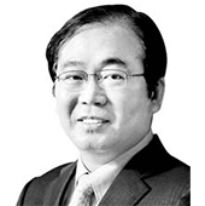No Itaewon witch hunts
Published: 14 Nov. 2022, 19:46

The author is the chief editor of the JoongAng Ilbo.
The Halloween celebration in Itaewon, Seoul cut short 158 young lives. A mother who had lost her 24-year-old son wailed, “God, take me instead!” Although it had been a collective tragedy, the pain from the personal loss cannot be imagined by others.
We lost 532 from the collapse of Sampoong Department Store in 1995 and 304 from the Sewol ferry sinking in 2014. The Sampoong Department Store in a posh neighborhood in southern Seoul collapsed after the owner changed the structure of the building to a five-store department store from a humbler four-story shopping center to make more money. The building showing signs of fissures from the opening fell apart five years later.
The Sewol ferry was an old vessel bought from Japan by the owner. The vessel had retired with its kitchen section burnt down from aged electric wires. The Japanese seller would have laughed at the windfall of selling the ship to Korea, one of major shipbuilders around the world. The ferry sank because it was restructured to carry more people and goods. Greed killed hundreds of innocent lives.
Flowers, memos, drinks and snacks are placed in front of Exit No.1 of Itaewon Station, Seoul to commemorate the tragic deaths of 158 from a fatal crowd crush on Saturday, Oct. 29, before Halloween. [CHOI JAE-YOUNG]
Last month, people died while walking in the crowded streets on the weekend night. Like Sampoong and Sewol cases, a deadly accident had been foreseeable. Police and the Yongsan District office had expected more than 100,000 youngsters to swarm into the neighborhood for the first Halloween event in three years after restrictions from Covid-19 were lifted. Yet authorities did not prepare any countermeasures. What is the raison d’être of the state?
The government has been focusing on finding who is liable. The special investigation headquarters under the National Police Agency (NPA) has indicted six field officials while leaving the upper command intact. An intelligence officer at the Yongsan Police Station took his own life out of guilt. Police and fire department officers are protesting why officers on the frontline are taking all the blame.
American political theorist Iris Young said that if authorities concentrate on finding who should take legal responsibility, someone will avoid responsibility. She focuses on tracing back to the actions or motivations of particular individuals to address to what she called “structural injustice.” If so, the government, companies, and civilians must act to make the changes.
In 1755, an earthquake of a magnitude of 8.5 to 9 hit the Portuguese city of Lisbon. Up to 10 percent of its 250,000 population died and 85 percent of the buildings were destroyed. Amid continued aftershocks that caused fire and looting, the devout Roman Catholic Church found scapegoats, claiming the tragedy to be a “divine judgement” on human corruption and indulgences. Manic Witch-hunting and persecutions ensued. The Marquis de Pombal — the prime minister who awakened to rationalism after spending six years in Britain as ambassador — took control and rebuilt the city not by prayers but by science. Despite protests from the church, he ordered bodies thrown into the sea to prevent further decay in Lisbon.
He commissioned the first seismic study ever to rebuild the city to be safe from earthquakes. Buildings could not be built over four stories and roads were widened to allow people to take shelter. He fought with nobles and religious leaders to pave the way for reason and science.
After Sampoong, Sewol and Itaewon tragedies, Koreans must be determined to change. Yet politicians remain indifferent. They are seeking political interests from the deadly event. The Democratic Party (DP) demands a presidential resignation while the governing forces are pushing with arrest of the opposition leader on many charges. There is no end to the aporia. A national system that makes light of human dignity and public safety cannot be just. The courageous must raise the voice to correct the structural injustice.
In 2016 — 21 years after the Sampoong collapse — a survey on 40 firefighters at the rescue scene showed that all of them worried about the possibility of a major accident. The title of a special bill on the Sewol ferry tragedy included such words as “fact-finding” and a “safe society.” Under the goal of building a safe society, investigations had been repeated nine times, and yet maritime accidents have doubled over the years.
Who should be held accountable for the Itaewon tragedy? Punishing people in command and on the spot cannot end such tragedies. The structural injustice from collective negligence must be corrected. We must commit to a society where human dignity, lives and safety come first at all times. After the earthquake in Lisbon, witch trials and burning executions were banned. Korea today also must change.










with the Korea JoongAng Daily
To write comments, please log in to one of the accounts.
Standards Board Policy (0/250자)